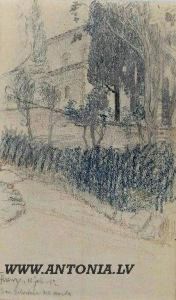Jan Rozenthal Paintings
Jan Rozenthal, born on May 18, 1854, in Warsaw, then part of the Russian Empire, was a Polish realist painter known for his profound influence on the art movement in Poland during the late 19th and early 20th centuries. His work is often characterized by its emotional depth, attention to detail, and the way it captures the spirit of Poland’s people and landscapes during a period of national upheaval and change. Rozenthal's artistry was not confined to any single genre; he excelled in portraits, landscapes, and historical scenes, blending realism with elements of symbolism and romanticism.
Rozenthal's education and artistic training were comprehensive and international in scope. He studied at the Warsaw School of Fine Arts before moving to St. Petersburg, where he attended the Imperial Academy of Arts. His quest for artistic mastery took him further across Europe, including stops in Munich and Paris, where he was influenced by the works of the French realists and impressionists. These experiences enriched Rozenthal's artistic vocabulary, allowing him to develop a unique style that combined the detailed realism of his academic training with the light and color observed in French impressionism.
Upon returning to Poland, Rozenthal dedicated himself to capturing the essence of the Polish landscape and its people. His works from this period are celebrated for their ability to convey the mood and atmosphere of rural and urban Poland, often highlighting the beauty and dignity of peasant life. Rozenthal was also deeply moved by the historical struggles of his homeland, and he created several significant works that depicted key moments in Poland's history, imbuing these paintings with a sense of national pride and resilience.
Despite his success, Rozenthal's career was marked by personal tragedy and the broader turmoil of World War I. He continued to paint until his death on February 13, 1919, in Warsaw, leaving behind a legacy that has cemented his place as one of Poland's most important and beloved artists. His works are housed in many prestigious collections and museums, both in Poland and internationally, serving as enduring symbols of Poland’s cultural heritage and the universal appeal of his artistic vision.
